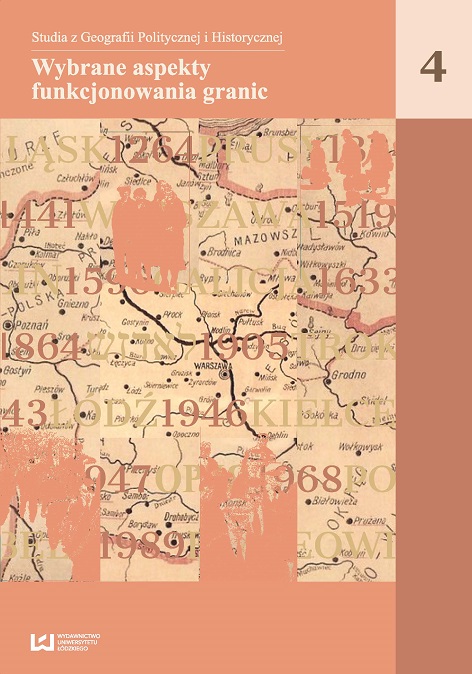Central America – difficult neighborhood on the isthmus between Mexico and South America
DOI:
https://doi.org/10.18778/2300-0562.04.02Keywords:
borders, border conflicts, Central America, Nicaragua, Costa RicaAbstract
The article discusses the origins and the course of contemporary boundaries in Central America. It focuses on the historical process of shaping the borders after the fall of the Spanish Empire as well as border disputes and conflicts arising from territorial claims against neighbors. The boundaries of countries in Central America developed since gaining their independence in 1821, and the emergence of the United States of Central America until the twentieth century when, in 1903, as a result of detachment from Colombia, Panama emerged as an independent state. The history of the seven countries in the region is turbulent and filled with numerous border conflicts and wars. Their causes must be sought, among others, in the social and political situation in the region mainly in the lack of land and expanding the problems of the ownership structure in the country. Special attention is paid to bilateral relationships and the border contemporary conflicts between Nicaragua and Costa Rica.
References
Foucher M., 2005, Tipología de las fronteras contemporáneas, [w:] Bovin P. (red.), Las fronteras del istmo, México, s. 19–24: http://books.openedition.org/cemca/655
Google Scholar
DOI: https://doi.org/10.4000/books.cemca.655
Girot P., 1989, Formación y estructuración de una frontera viva: El caso de la región Norte de Costa Rica, „Geoistmo”, 3 (2), s. 17–42.
Google Scholar
Girot P., 1994, The interoceanic canal and boundaries in Central America. The case of the San Juan River, [w:] Girot P. (red.), The Americas. World boundaries, Vol. 4, London.
Google Scholar
Granados C., Quesada L., 1986, Los intereses geopolíticos y el desarrollo de la zona Nor-Atlántica costarricense, „Estudios Sociales Centroamericanos”, 40, s. 47–65.
Google Scholar
Incer J., 1995, Geografía dinámica de Nicaragua, Managua.
Google Scholar
Malamud C., García Encina C., 2011, El conflicto fronterizo entre Costa Rica y Nicaragua: ¿medioambiente, soberanía, narcotráfico o mero instrumento electoral? (ARI), Real Instituto Elcano: http://www.realinstitutoelcano.org/wps/portal/rielcano/contenido?WCM_GLOBAL_CONTEXT=/elcano/elcano_es/zonas_es/america+latina/ari22-2011
Google Scholar
Morales Gamboa A., 2011, Cruzar la Raya: Frontera y redes sociales entre Costa Rica y Nicaragua, México, s. 267–275.
Google Scholar
DOI: https://doi.org/10.4000/books.cemca.715
Murillo J.H., 1986, La controversia de límites entre Costa Rica y Nicaragua: el Laudo Cleveland y los derechos canaleros 1821–1903, „Anuariode Estudios Centroamericanos”, 12 (2), s. 45–58.
Google Scholar
Musset A., 1997, Las fronteras de América central: una geopolítica de larga duración, „Estudios Fronterizos. Revista del Instituto de Investigaciones Sociales”, 40, s. 159–187.
Google Scholar
DOI: https://doi.org/10.21670/ref.1997.40.a09
Nuhn H., 1991, Zentralamerika. Ökonomische Integration und regionale Konflikte, Hamburg.
Google Scholar
Sibaja L.F., 1974, Nuestro Límite con Nicaragua: Estudio histórico, San José.
Google Scholar
http://actualidad.rt.com/actualidad/161153-nicaragua-inauguracion-proyecto-canal (9.08.2015).
Google Scholar
http://www.realinstitutoelcano.org/wps/portal/rielcano/contenido?W. (9.08.2015).
Google Scholar
http://www.elfaro.net/es/201306/internacionales/12368/ (9.08.2015).
Google Scholar
Downloads
Published
How to Cite
Issue
Section
License

This work is licensed under a Creative Commons Attribution-NonCommercial-NoDerivatives 4.0 International License.








